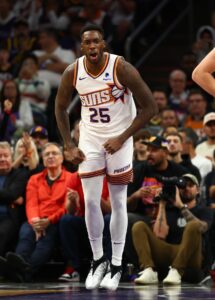There won’t be a ton of free agents who sign for more than the veteran’s minimum between now and the end of the NBA’s regular season. The majority of the players whose markets exceeded the minimum came off the board pretty quickly in July, and teams aren’t looking to spend big on the players who are still available.
Still, that certainly doesn’t mean every signing for the next seven months will be of the minimum-salary variety. In some cases – especially on the buyout market in February – being able to offer a couple million dollars more than the minimum could be the difference between a team landing a free agent and missing out on him.
With that in mind, it’s worth checking in on which teams don’t currently have the ability to offer more than the minimum. By our count, a third of the NBA is in this boat, though some of those clubs could generate some spending flexibility by making cost-cutting trades.
Here’s a breakdown of the teams currently limited to minimum-salary contract offers for free agents:
Teams above the second tax apron:
- Boston Celtics
- Milwaukee Bucks
- Minnesota Timberwolves
- Phoenix Suns
Teams operating above the second tax apron, which comes in at $188,931,000 in 2024/25, face a series of roster-building restrictions, including being prohibited from using any form of the mid-level exception, as well as the bi-annual exception.
The Celtics, Bucks, Timberwolves, and Suns all fall into that group of teams above the second apron and therefore don’t have any cap exceptions available to use on free agents besides the minimum salary exception.
Teams very close to the second tax apron:
- Los Angeles Lakers
- Miami Heat
Because their team salaries are below the second apron, the Lakers and Heat each technically have the ability to use their taxpayer mid-level exception, which is worth $5,168,000 this season.
However, both clubs are operating so close to the second apron that using any portion of the taxpayer MLE would push team salary above that threshold, which isn’t permitted — a team that uses the taxpayer MLE can’t have a salary above the second apron upon the completion of the signing (or at any time after that).
Therefore, unless they make a move to shed salary, the Lakers and Heat will be limited to minimum-salary signings from here on out.
Over-the-cap teams that have used all their cap exceptions:
- Denver Nuggets
- Philadelphia 76ers
The Nuggets are currently operating between the first and second tax aprons and have already used their taxpayer mid-level exception to sign Dario Saric. Because the bi-annual exception isn’t available to teams above the first apron, Denver can no longer offer more than the veteran’s minimum.
The Sixers, meanwhile, used their entire room exception to re-sign Kelly Oubre after spending all their cap space. They’re now well over the cap and only have the minimum salary exception left to sign a free agent outright.
It’s worth noting that acquiring a player via sign-and-trade is technically a possibility prior to opening night for teams who have used up all their cap exceptions and want to add a free agent for more than the minimum. However, that’s not currently a practical option for either Denver or Philadelphia, who are both above the first tax apron.
Teams right up against their hard caps:
- Dallas Mavericks
- Golden State Warriors
The Mavericks have about $4.25MM of their mid-level exception still available after using a portion of it to sign Naji Marshall, and both Dallas and Golden State still have their full bi-annual exceptions on hand.
Based on the roster moves they’ve made so far this summer though, both the Mavs and Warriors are hard-capped at the first apron of $178,132,000 and are less than $1MM away from that hard cap. In other words, unless they shed salary by trading or waiving one or more of their current players, those two teams aren’t just prohibited from using their remaining exceptions — they’re also unable to add another minimum-salary player on a standard contract.
Dallas and Golden State are each carrying at least one player with a non-guaranteed salary, so it would technically be possible for, say, the Mavs to cut A.J. Lawson and then use a portion of their mid-level exception to sign a free agent. However, their breathing room below the hard cap is so limited that any signings above the minimum are unlikely, unless a cost-cutting trade generates more flexibility — the same goes for the Warriors.
 AUGUST 21: The Suns are waiving forwards
AUGUST 21: The Suns are waiving forwards